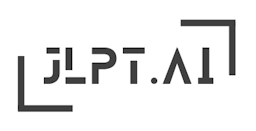

N1RareGrammar
ka ina ka
か否か is a formal and literary expression used to indicate whether something is the case or not. It is often used in written language, legal documents, or formal speeches. The meaning is similar to 'whether or not' or 'if or not' in English.
Noun + か否か
彼が犯人か否か
Verb + か否か
彼が来るか否か
彼が犯人か否かはまだ分かっていません。 (Inspired by a Detective Manga)
We still do not know whether or not he is the culprit.
かれがはんにんかいなかはまだわかっていません。
Kare ga hannin ka ina ka wa mada wakatte imasen.
彼が来るか否かは連絡を待っている。
I am waiting for confirmation whether or not he is coming.
かれがくるかいなかはれんらくをまっている。
Kare ga kuru ka ina ka wa renraku o matte iru.
この選択肢について、皆の意見が分かれていますか否か。
Is there a division of opinion among everyone about this option?
このせんたくしについて、みなのいけんがわかれていますかいなか。
Kono sentakushi ni tsuite, mina no iken ga wakarete imasu ka ina ka.
この医薬品の使用は許可されたか否かを確認してください。
Please verify whether or not the use of this medication has been approved.
このいやくひんのしようはきょかされたかいなかをかくにんしてください。
Kono iyakuhin no shiyou wa kyoka sareta ka ina ka o kakunin shite kudasai.
決定が下される前に、審議を行うか否かを話し合いましょう。
Let's discuss whether or not we should conduct deliberation before reaching a decision.
けっていがくだされるまえに、しんぎをおこなうかいなかをはなしあいましょう。
Kettei ga kudasareru mae ni, shingi o okonau ka ina ka o hanashiaimashou.
Choose the correct interpretation of 'か否か'.